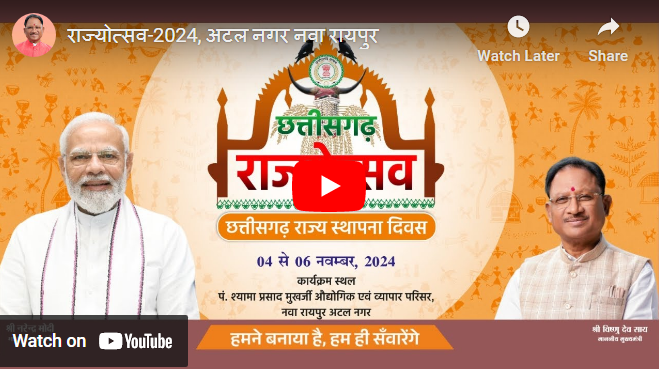Artists from Meghalaya, Mizoram, Assam, and More Showcase their Tribal Dances
Raipur (thestates.news) | Artists from northeastern states and across the country are set to showcase their rich cultural heritage at the grand two-day ‘Janjatiya Gaurav Divas’ event, taking place at Science College Ground in Raipur. Artists from five northeastern states—Meghalaya, Mizoram, Assam, Arunachal Pradesh, and Sikkim—have already arrived in Raipur to perform in the programme scheduled for November 14-15. They were given a warm, traditional welcome with garlands and tilak at Raipur Railway Station. These northeastern artists will celebrate the diverse colors of their culture by presenting folk dances such as Wangla-Rungla, Ret-Kinong, Geh Padam A Na-Nyi E, and Solakia.
Garo tribals perform the Wangla-Rungla dance after harvesting to thank their deity, Misi Saljong
A 20-member team from Meghalaya has arrived in Raipur to perform at the Janjatiya Gaurav Divas celebration. This group will present the Wangla-Rungla folk dance, performed by the Garo tribe after the harvest season. The team, led by Shri Mansen Momin, has traveled from North Curve Hills, approximately 200 km from Shillong, the capital of Meghalaya. Shri Momin shared that Wangla is a major festival for the Garo tribe, which has an agriculture-based economy. The tribe performs this dance to honor Misi Saljong, the God of fertility, as a way of expressing gratitude after the harvest. They give thanks to the deity for providing the crops, worship him through dance and song, and offer the first yield as ‘bhog’ (a sacred offering). No agricultural product is used before expressing their gratitude to Misi Saljong.
Both men and women participate in the Wangla-Rungla folk dance. Male dancers play the traditional drum, known as the ‘dama’. The leader of the dancers, called the ‘Grikgipa’ or ‘Toregipa’, directs the performance. Women sway their hands gracefully to the rhythm, while the men dance energetically to the beat of their drums.
Solakia dance is performed to celebrate victory over enemies, accompanied by vocal music that resembles chanting
A folk dance team from Aizawl, the capital of Mizoram, has arrived in Raipur to perform the Solakia dance. The 20-member team includes 11 men and nine women, representing the Mara tribe of Mizoram. Solakia, which means “severed head of the enemy,” was historically performed to celebrate victory over adversaries—especially when the victor brought home the enemy’s head as a trophy. Today, however, this dance is performed by men and women of Mizo communities on all major occasions.
Shri Jothmazam, the team leader from Mizoram, shared that the Solakia dance originated from the Lakher community. The vocal music that accompanies this dance is closer to chanting than traditional singing. Rhythmic music is provided by a pair of gongs, one larger than the other, known as the ‘darkhuang’, and the sound is enhanced by several pairs of cymbals.
Shri Jothmazam explained that the Mara tribe, which performs this dance, is a Kuki tribe residing in the Lushai Hills of Mizoram and the Chin Hills of Myanmar. They are also known by various names, including Lakher, Shendu, Tlosai, and Khongjai.








